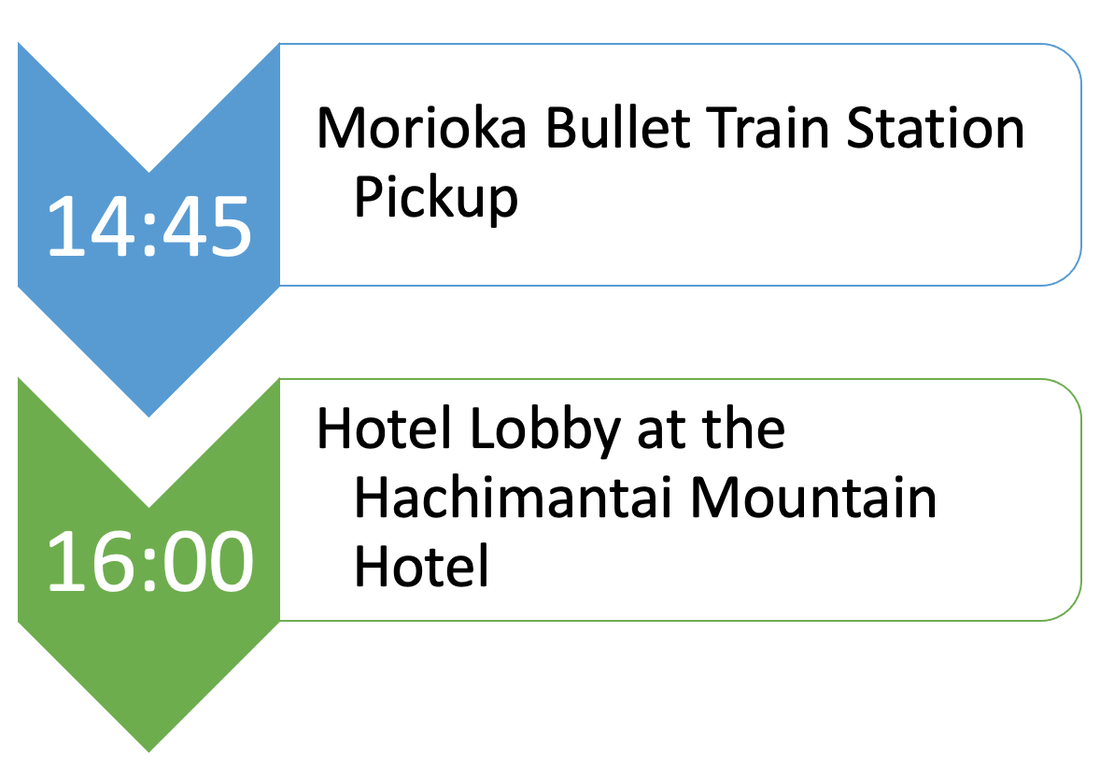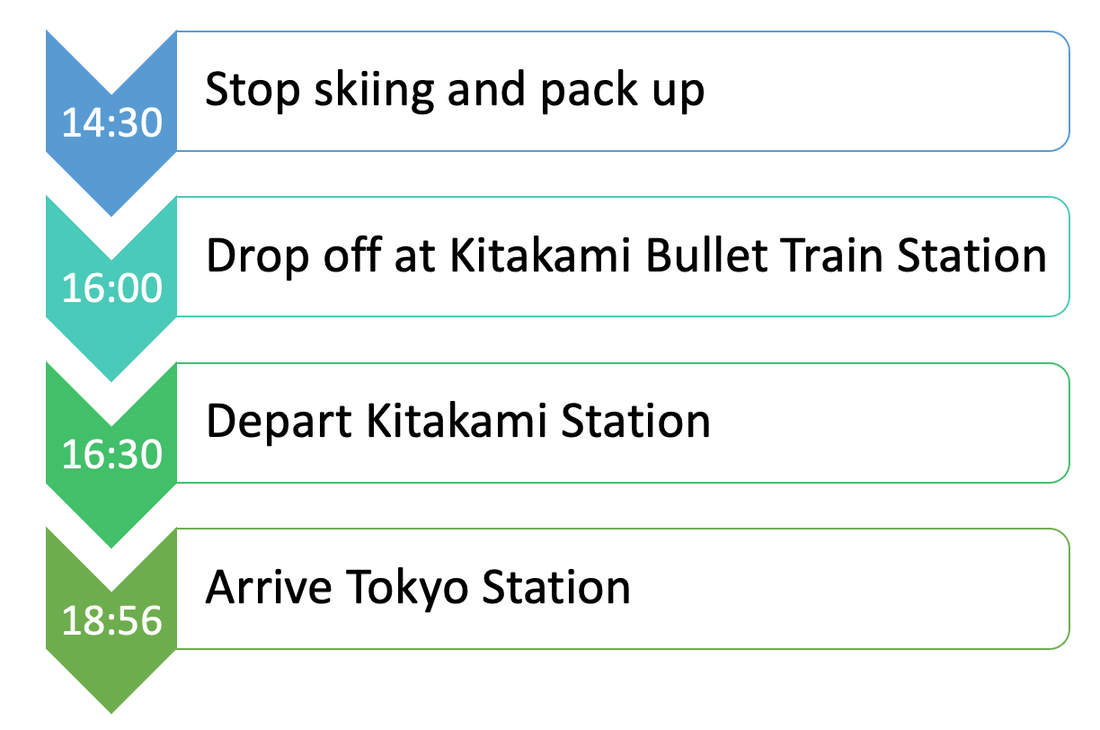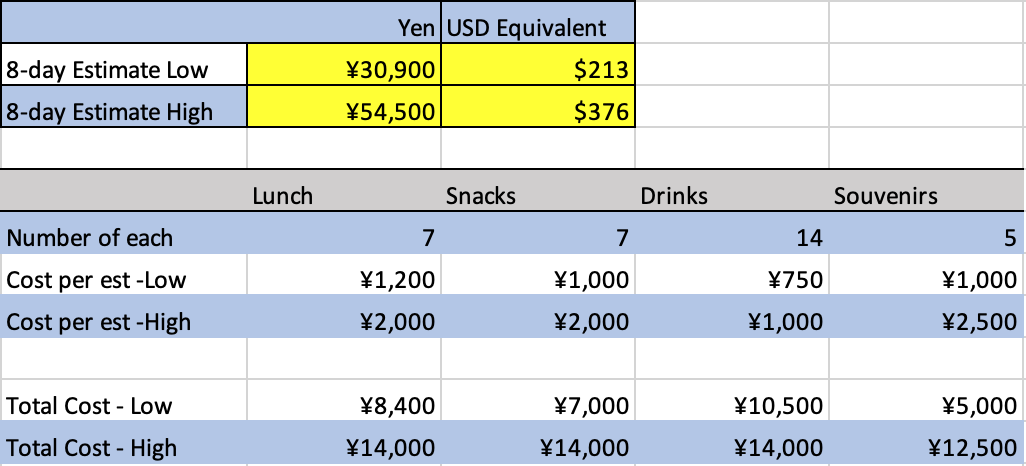8-Day Tohoku Indy Trip Logistics
Planning an international ski trip can be overwhelming; luckily, you have connections! This page is dedicated to where to meet, what flights to book, what to bring, and details about transportation and money on your Indy trip.
Rental skis
AT skis and splitboards are available to rent for this trip! See all rental options here.
Rental skis
AT skis and splitboards are available to rent for this trip! See all rental options here.
-
Getting There
-
Getting Back
-
Pro Tips
-
Money
<
>
Meet the group at Morioka train station at 2:45 pm or Hachimantai Mountain Hotel at 4 pm
Option #1: Meet the group at Morioka Station South Exit @ 2:45pm
|
Morioka Station is a major station located on a bullet train line which has direct access from Tokyo Station as well as direct access from Shin-Hakodate-Hokuto Station in Hokkaido.
Morioka Station can be reached with a 2.5 hour high-speed train ride from Tokyo, reaching speeds of 360km/h in the process! Your JST host will meet you at the South exit at 2:45 pm. If you arrive early, there is a waiting room where you can wait for your host in a warmer setting. Pictures of the meeting point are to the right. Trying to figure out what trains to take? Use this route planner here. |
|
Option #2: Meet the group at our hotel
If you're already skiing or in the area, you can meet up with the group at the Hachimantai Mountain Hotel at 4:00pm.
Booking International Flights
You will need to book your international flights to/from Japan. You need to arrive in time to be at the meeting point of Morioka Station by 2:45pm on day one of your trip. If you're planning on arriving on the day your trip starts, note that Tokyo Station is 2 hours from NRT airport and and a little over 1 hour from HND airport. If you can't make it to Morioka Station in time, you'll need to arrive the previous day and spend a night in Tokyo.
Getting Back
This trip ends at a different location from where it starts. Drop off will be at the Kitakami bullet train station at 4pm.
|
Following your last day of skiing, drop off will be provided at Kitakami bullet train station at 4pm. If you're headed back to Tokyo at the end of the trip, you can expect to be in Tokyo Station by 7pm.
If you're planning on staying in Tokyo for a few days, note that you can mail your ski bag straight to NRT or HND airport for about ¥2,700 (approx US$18)--that way you won't have to lug it around while you sight-see or travel around other regions. You'll need a minimum of 2 days from the last day of this trip before you depart NRT or HND to utilize this option. For example, drop your skis off by 2pm on the last ski day if you plan to depart NRT or HND within 48 hours. Trying to figure out what trains to take? Use this route planner here. |
We're experts at running ski trips in Japan. Here are some recommendations that will make your life significantly easier!
Pro Tip #1: Mail your ski bags
TLDR: This tip is useful if you're spending a day or two in Tokyo before or after your trip. Otherwise, don't worry about this pro tip.
If you're planning on starting or ending the trip using the bullet train (which is the most common option), it will save a lot of hassle if you can mail your ski bags. This will save you from lugging them around the public transportation network. If you're planning on arriving in Japan at least 36 hours before your trip meet up time, you can save a lot of hassle by mailing your ski bags directly from your arrival airport to the hotel we'll be staying at. It costs only ¥2,700 (approx US$18) and will allow you to travel around easily through one of the worlds best public transportation networks.
For example:
Arrive in Tokyo two days before your trip and mail your bag to our starting point at Hachimantai Mountain Hotel. Your baggage should arrive at the hotel before 9pm the next day. Before mailing your bag, be sure to confirm with them that it will be delivered by the night of your tour start date. In Japan, if they promise a delivery time, it'll be there when they say.
For more information on mailing bags, checkout this great article about how it's done here.
If you're planning on starting or ending the trip using the bullet train (which is the most common option), it will save a lot of hassle if you can mail your ski bags. This will save you from lugging them around the public transportation network. If you're planning on arriving in Japan at least 36 hours before your trip meet up time, you can save a lot of hassle by mailing your ski bags directly from your arrival airport to the hotel we'll be staying at. It costs only ¥2,700 (approx US$18) and will allow you to travel around easily through one of the worlds best public transportation networks.
For example:
Arrive in Tokyo two days before your trip and mail your bag to our starting point at Hachimantai Mountain Hotel. Your baggage should arrive at the hotel before 9pm the next day. Before mailing your bag, be sure to confirm with them that it will be delivered by the night of your tour start date. In Japan, if they promise a delivery time, it'll be there when they say.
For more information on mailing bags, checkout this great article about how it's done here.
Pro Tip #2:
|
Pro Tip #3:
|
What you can expect to spend on this trip
|
This trip includes accommodation, transportation, breakfast and dinner each day but it doesn't cover your lunch, drinks, snacks or lift tickets (skiing is free for Indy Pass holders). So how much should you bring and how should you bring it?
The amount of money you spend in Japan largely depends on your preferences. Do you want to eat sushi every day? Are you going for the most expensive sake? Will you be buying lots of souvenirs? Below is a cost estimate based on how much is spent daily on each item. Prices are in JPY. Over the 8-day trip, you can expect to spend ¥30,900 on the low end or ¥54,500 on the high end. Keep in mind that results will vary depending on your personal spending. If you are travelling with the Indy Pass, lift tickets are free. If you are not an Indy Pass holder, you will need to budget an additional ¥45,000JPY for 7 days of lift tickets. |
How to spend in JPY
The currency in Japan is the Japanese Yen which is denoted by "JPY" or as "¥".
Credit Cards
First, you should know that credit cards are still a recent phenomenon in this remote region. While they are now accepted at the majority of establishments in Japan, you should expect some lunch vendors at the ski resorts we visit, to only take cash. If you go off an an excursion away from the ski resorts, bring cash with you, as you'll find that cash is still king in many of the surrounding towns and villages.
Getting Cash in Japan
As a tourist, there are two main ways of getting cash in Japan: 1) bring your home currency with you and exchange it at the currency exchange window, or 2) use ATM's within Japan to withdraw your funds.
Currency exchange window
You can exchange your home currency into JPY after arriving in Japan. This is a very simple option as there is no bank to get in the way and decline your currency conversion. The simplicity has a price though because the exchange window doesn't give you the most advantageous rate.
Withdraw funds from ATM's
You should be able to withdraw funds from any Seven Eleven ATM in Japan. The conversion rate is great but sometimes banks have issues with Japanese ATM's which can cause them to block your transactions. Be sure to check with your bank before coming to see if they have a ATM withdrawal fee or currency conversion fee. If they do, it may be cheaper to just convert cash at a currency exchange window.
The best idea
is to show up in Japan with a few hundred dollars of your own currency, convert it in to JPY, then use ATM's after that. Be sure to call your bank and let them know you'll be making withdrawals from Japanese ATM's so they don't block your account!




